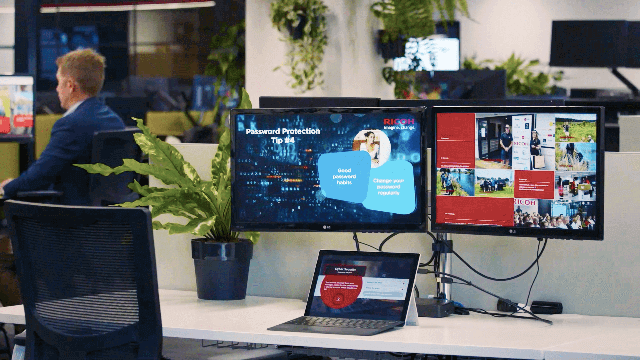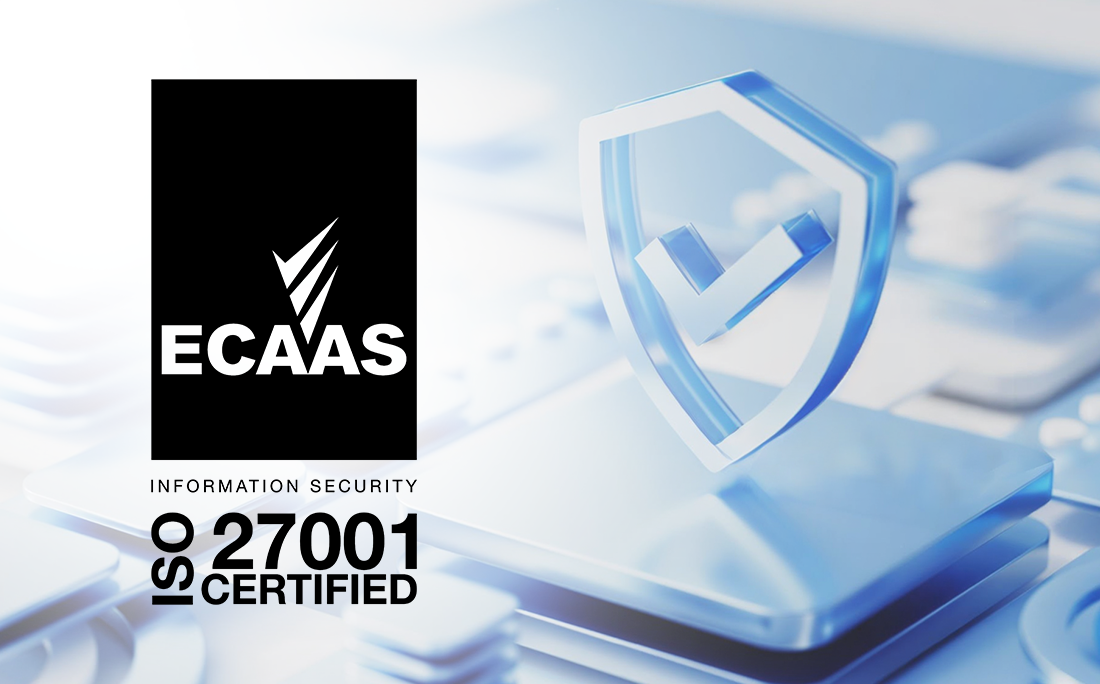
Many organisations struggle to reach and engage their entire workforce. Some non-desk (frontline) workers are hard to reach, often without access to a corporate device. There are also more hybrid and remote workers in recent years, which makes it challenging for internal communications teams to maintain regular and consistent communication for their entire workforce.
Read on to find out what the ideal communication channels are for each type of internal communication messaging, and how they
complement each other.
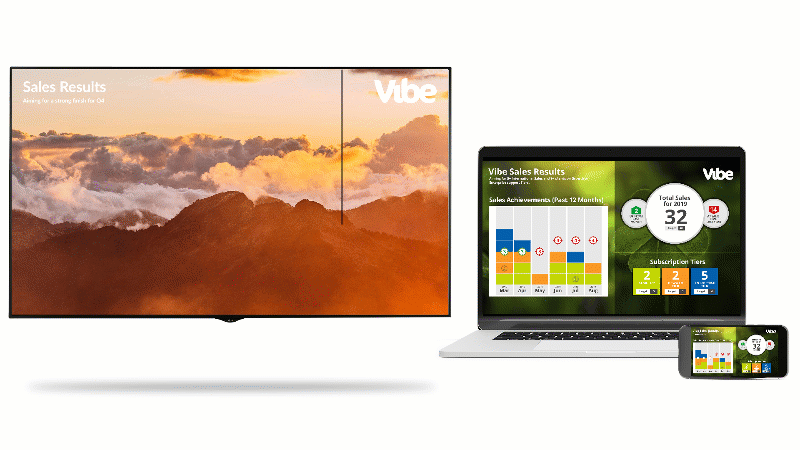
Choosing the most appropriate channel for your message will determine your success
11 types of internal communication
Here’s a list of all the different kinds of internal communication businesses use. No two businesses are the same – you may not need to communicate all these types of internal communication messages in your organisation.
- Leader-to-employee
- Employee-to-leader
- Employee-to-employee
- Information delivery
- Culture communication
- Change management
- Crisis management
- New hire communication
- Employee recognition communication
- Health and safety communication
- Diversity and inclusion communication
These messages all have different objectives and the secret to getting these messages to resonate with your workforce is to use the ideal communication channel for your messaging. Let’s look at which channels suit each type of internal communication.
Leader-to-employee communications
Also known as top-down communication, management to employee communication is one of the most important types of internal communication. It’s a hierarchical method of sharing information and instructions inside a company. Leadership messages include All Hands or Town hall announcements, strategic goals, progress updates, motivational/morale-boosting messages.
Effective leadership communication means strategically planning and delivering messages that inspire, guide, and engage employees. As remote and hybrid work become normalised, strong leadership communication will help align and unite the entire workforce.
Messages from the leadership team should stay on the forefront of everyone’s mind – especially frontline workers. Communication channels such as emails and collaboration tools, like Teams, Slack and Workplace are great for pushing out a mass message once, but these channels struggle to keep important messages front of mind – messages get lost in the communication clutter and are quickly forgotten. Here are some better alternatives:
- Digital signage screens present leadership messages in an easily digestible format, and works especially well for organisations with a large frontline workforce who won’t normally access a corporate device. Plus, if it's dynamic and engaging, it becomes something employees want to see.
- Corporate screensavers and Home page takeovers are great for subtly keeping key messages top of mind. When staff open the browser for the first time, they’ll instantly be reminded of essential messages
- Intranet pages suit long-form and rich media content such as PowerPoint slides and PDFs. Best practice is to share a snackable summary on digital signage screens and guide viewers to the intranet for more detail.
- Team meetings or toolbox meetings are ideal for non-desk workers such as frontline staff
Employee-to-leader communications
Also known as bottom-up communication, employee to leader communication is as significant as top-down communication. This type of communication allows employees to pass feedback to senior management.
Employee-to-leader messages include employee surveys, discussion forums, polls, and focus groups. Internal communicators should give employees access to the necessary tools and create opportunities to give feedback. The ideal communication channel to use for bottom-up communication include:
- Workplace communication platforms like Workplace from Meta. These work well to capture polls, surveys, and questions for senior leaders to address at an All Hands meeting
- 360o feedback and employee surveys give staff the chance to share their thoughts on how well management are performing
- Email will work, but again you risk having your message go unopened
Employee-to-employee communications
Encouraging collaboration and connecting employees boosts innovation and creativity, and breaks down information silos. Also known as lateral communication, examples of employee-to-employee communication include social media posts, employee recognition, team events (virtual or in person).
If your goal is to engage employees in conversations that grow the company culture, improve problem-solving, generate new ideas and strengthen team bonds, then you need to choose the right communication channels. Workplace communication apps like Teams, Slack or Workplace from Meta are great for sharing informal workplace knowledge but should be carefully monitored.
Information delivery
Not the most glamourous of the types of internal communication, but information delivery is essential for an organisation’s success because it equips staff with everything they need to know to do their jobs. Examples of information delivery include legal policies, brand positioning guidelines, onboarding process and key personnel, HR policies and documents.
For desk-bound workers
Sending these messages on emails and collaboration tools can make internal communication teams feel limited with how frequently and how much important company information they send out; they don’t want to overwhelm or clutter the communication channel.
As an employee using these channels, you tend to dread receiving yet another email or Teams chat, because it disrupts your focus from the work you need to be doing, and it’s yet another task you need to action.
The best combination of channels to share essential information are intranet site and workplace digital signage. The employee intranet is a great way to keep all the must-know information in one secure place, but it can be difficult or confusing for employees to navigate to. That’s where a digital channels such as screensavers, home page takeovers and digital signage screens come into play. Amplify intranet traffic by sharing teaser information of company news, events, HR policies, legal processes, or any crucial information you need to convey.
This is more effective for message retention in the long term because it reinforces key messages over time. And you’ll break barriers and connect with every employee. Make good use of the corporate screensavers and home page takeovers to make sure your remote and hybrid workers don’t miss the message.

Make the most of idle screens with corporate screensavers
For non-desk workers
Non-desk workers, like those in distribution centers, warehouses, or out on the manufacturing floor, may not have access to the same communication channels that corporate or desk-bound workers do. They often aren't on their mobile devices or don't have access to a corporate device.
Gone are the days of printed notices on a cork board. The ideal way to engage with these non-desk workers would be to use digital signage screens around the worksite and common areas such as lunchrooms. This shares crucial, up-to-date information in a way that doesn't distract staff from their task.

Digital signage screens are the ideal channel for non-desk workers
Culture communications
Cultivating a corporate culture ranks high for many internal communications teams. A company culture has a wide-reaching influence over recruitment and retention, employee engagement, brand positioning and even financial performance. Some examples of culture communications include:
- Company mission, values and goals
- Corporate Social Responsibility
- Rewards, recognition and benefits
As one of the top drivers for an organisation, culture communications deserve your full attention. The ideal communication channel to use for culture communications include:
- Digital signage screens and screensavers are a great channel to show content that shouldn’t be missed including team photos, share praise and recognition, inform staff about job perks and more.
- Workplace communication platforms like Workplace from Meta are an interactive and engaging way for employees to share posts, videos, and images to convey and grow the organisation culture.
- Email newsletters are effective to convey detailed information and distribute attachments but can be very overwhelming for employees, and may not reach frontline workers.
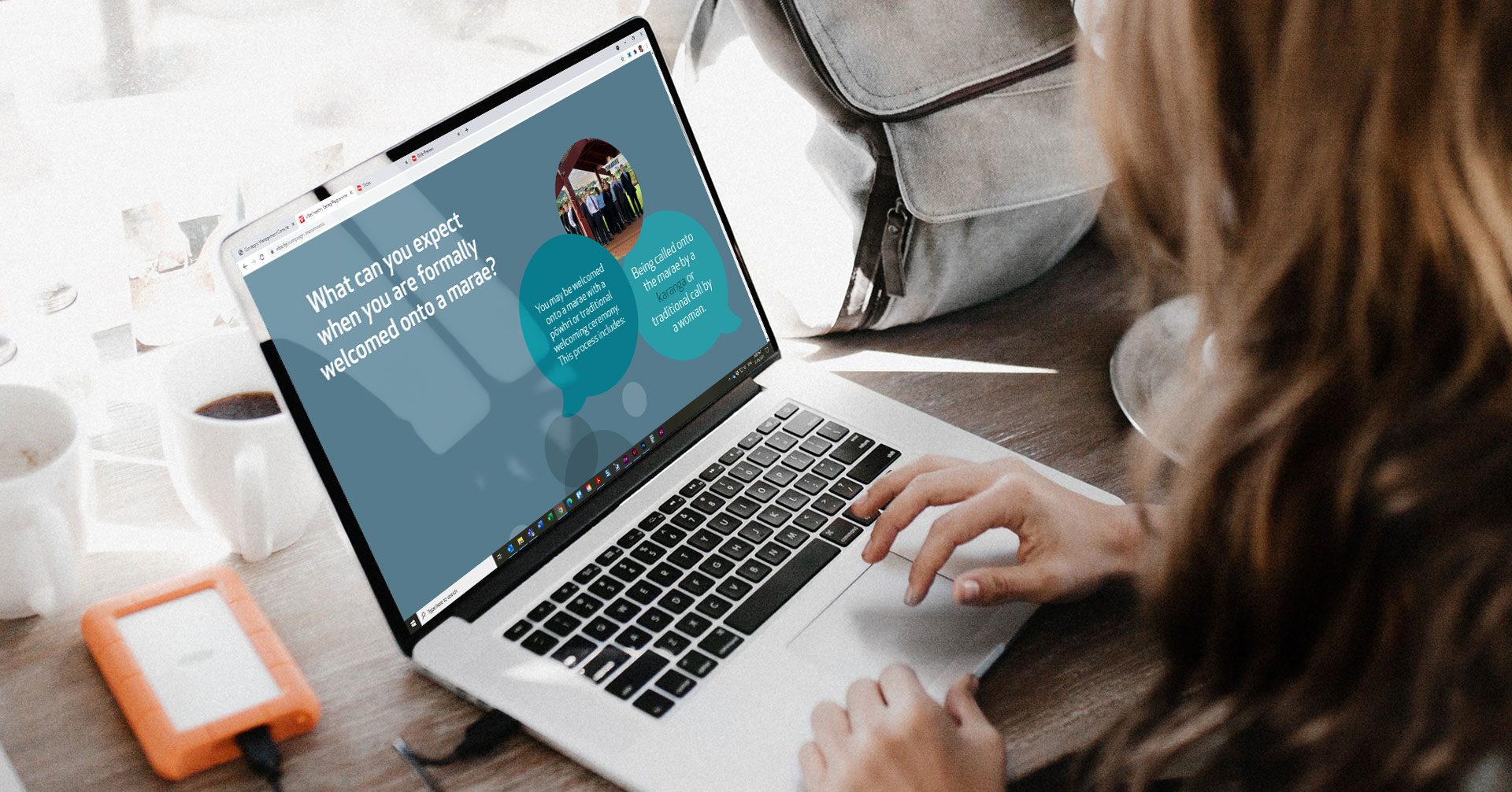
Culture communications suit a range of communication channels, even corporate browser home pages!
Change management
When your company is undergoing a major transformation, such as moving to a new software provider or getting acquired, effective change management communications keep staff informed in a timely manner and addresses their concerns and feedback.
Some examples of change management communications include:
- Restructuring and redundancies
- New software, systems of processes
- Policy updates (e.g. remote and hybrid working policies and procedures)
Effectively communicating changes in the workplace and helping employees navigate through uncertainty is critical to success – as seen by events such as the pandemic and lockdowns. Include these channels in your internal communications plan:
- Digital signage screens and screensavers are a great channel to show content that shouldn’t be missed including team photos, share praise and recognition, inform staff about job perks and more.
- Intranet pages where employees can read about the upcoming changes in more depth at their own time. To direct traffic to these important intranet pages, share a snackable summary on digital signage screens and guide viewers to the intranet via a QR code.
- Employee feedbacks, surveys or focus groups capture feedback and questions and is essential for a comprehensive internal communications strategy
Crisis management
When disruption and unanticipated challenges happen, good crisis management communication will ensure that your workforce is well prepared. Internal communications teams need to communicate pre-crisis protocols, key staff members, and news broadcast and more. As part of a comprehensive crisis communication plan, you should already have pre-drafted templates for quick message dispatch. You also need to know which channels work best for crisis management messages:
- Workplace communication apps and social media channels with push notifications will instantly deliver timely updates to staff
- Digital signage screens showing the correct procedures and key information to prepare staff in the event of an emergency. During a crisis, use a full-screen warning to instantly alert all staff at the workplace, especially those who don’t have access to a corporate device
- Email blast to the workforce is a catch-all for those who haven’t seen the app notifications or missed signage on screen
- Pulse surveys are good for capturing feedback and employee sentiment in the post-crisis phase
Together, these channels work together to share information in real-time and are accessible by the entire workforce.
New hire communications
The onboarding process can make a lasting impression on new employees and set the tone for their time in your organisation. Some examples of new hire communications include employee surveys, onboarding schedule, social events calendars, leadership team introductions etc.
Focus on these channels to optimally deliver your onboarding or new hire communications:
- Email to the office about the new hires are a great way to kick off introductions
- Intranet pages are a great one-stop-shop for new employees to find out everything they need to know about starting work.
- Pulse surveys capture how new hires feel about the onboarding process and can help HR or recruitment teams optimise onboarding
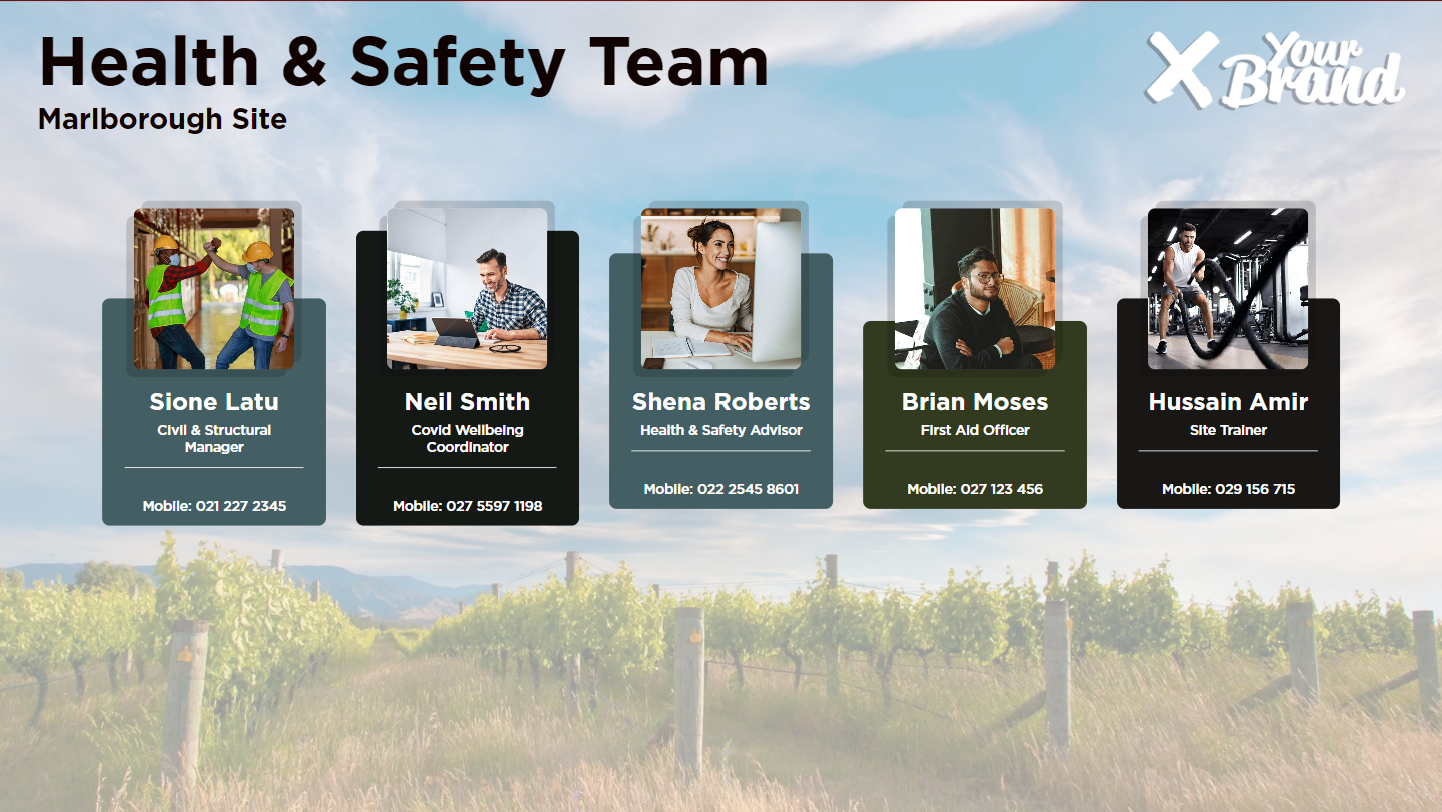
Use digital signage to keep key information front of mind for new employees
Employee recognition communications
Recognising employees for their efforts will significantly boost employee engagement. Employee recognition communications can come from managers or teammates. Focus on these channels to effectively deliver praise and reinforce great behaviours:
- Digital signage screens showcasing star employees in common areas
- Corporate screensavers to include even remote and hybrid staff
- Monthly newsletters
- Social apps like Workplace are an informal way to give kudos
Health and safety communications
Health and safety communications, such as fire evacuation plans, lockdown processes, and first aid personnel, need to stay front of mind and
this information needs to be readily accessible by all employees. For that reason, we recommend sharing full health and safety policy
documents on the intranet and sharing a bite-sized version of on digital signage screens around the workplace and on screensavers.
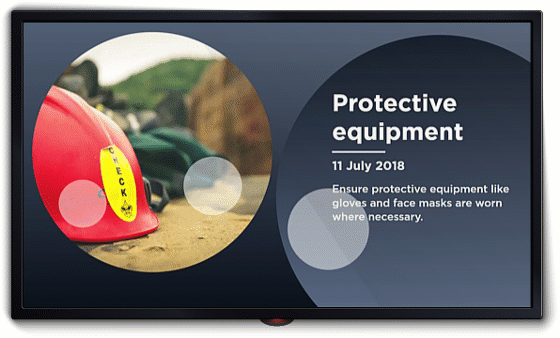
A snackable summary of health and safety information is easier to digest
Diversity and inclusion communications
Diversity and inclusion (D&I) communications is essential for fostering a diverse and inclusive workplace. Effective communication can help promote understanding, awareness, and engagement among employees. Most importantly, they need to be ongoing and engaging. Here are some communication channels that allow for frequent and lively messaging:
- Workplace digital signage is a consistent reminder of D&I messages that never get stale
- Online channels or groups on apps like Slack, Teams , Yammer or Workplace can be a dedicated place to share dedicated D&I discussions and updates
- Intranet site is a great place to share detailed, media rich messages, and can be the definitive source for all D&I communications
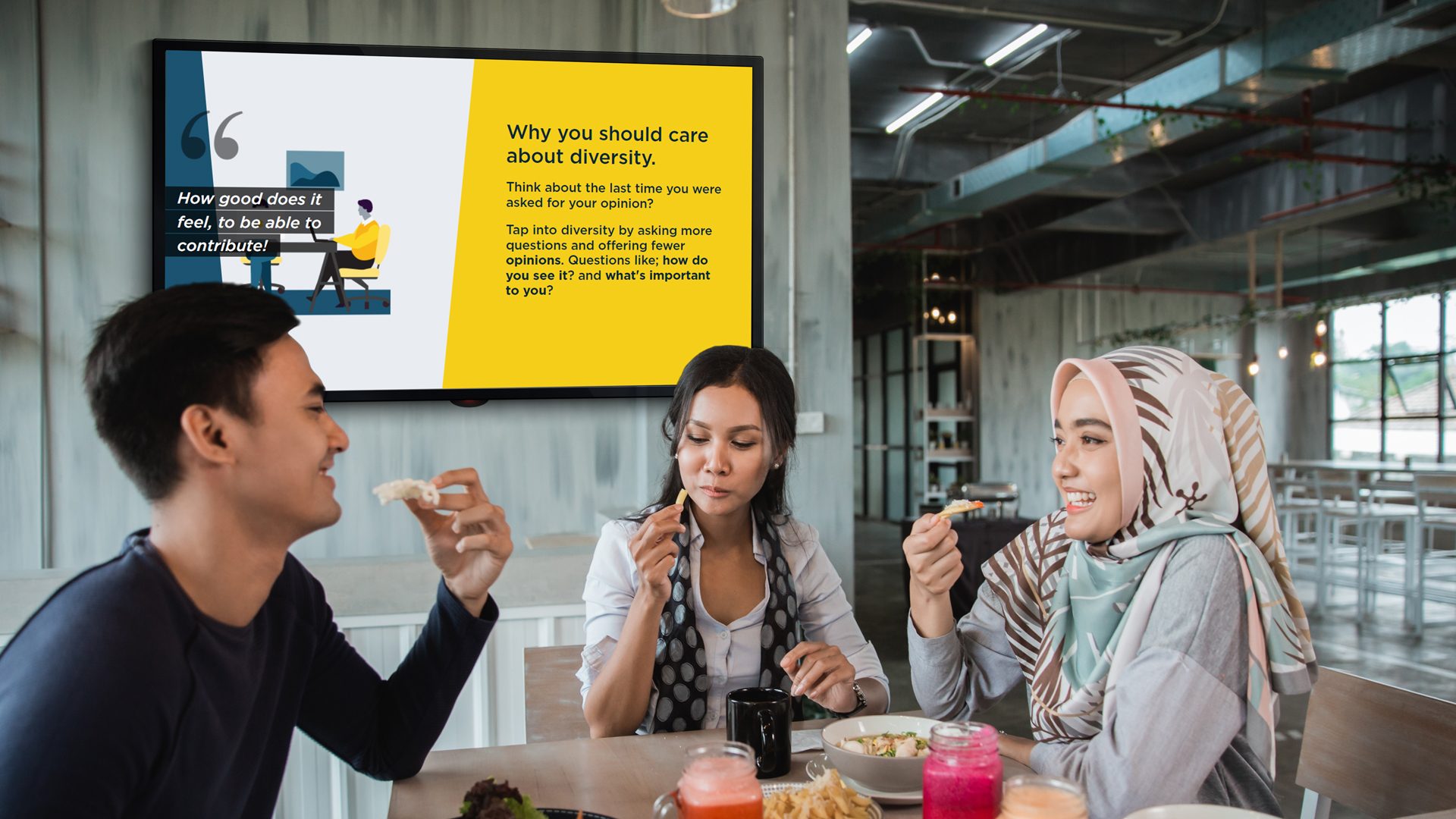
Diversity and Inclusion messages need to be shown with frequent repetition to remain in the long-term memory
Improve your workplace communications with Vibe
Digital signage is a highly effective communication channel for internal communications. It brings corporate culture to life, boosts employee engagement and ensures key messages stay front of mind. This makes it an invaluable channel for delivering engaging messages to the entire workforce.
Vibe is a unique digital signage solution that empowers communication teams to get dynamic, visual messaging and content in front of the entire workforce, wherever they are. Reach all of your people, whether they’re at home, at their desks, on the road or the factory floor via digital signage screens, screensavers, web browser and mobile.
To transform your internal communications, contact our Vibe team or start a free trial.
.png)
